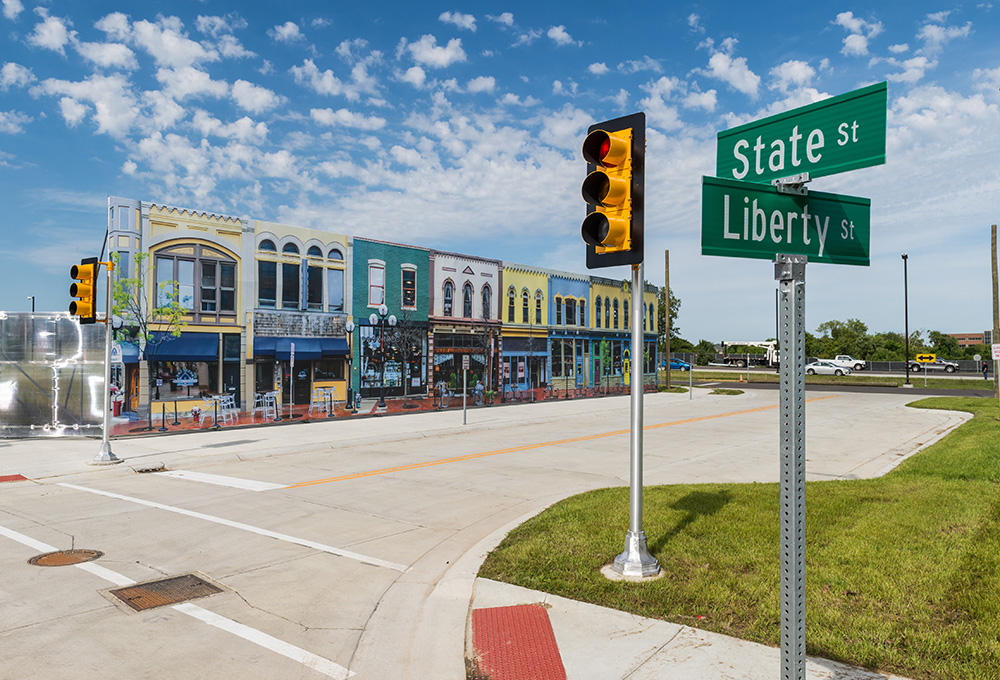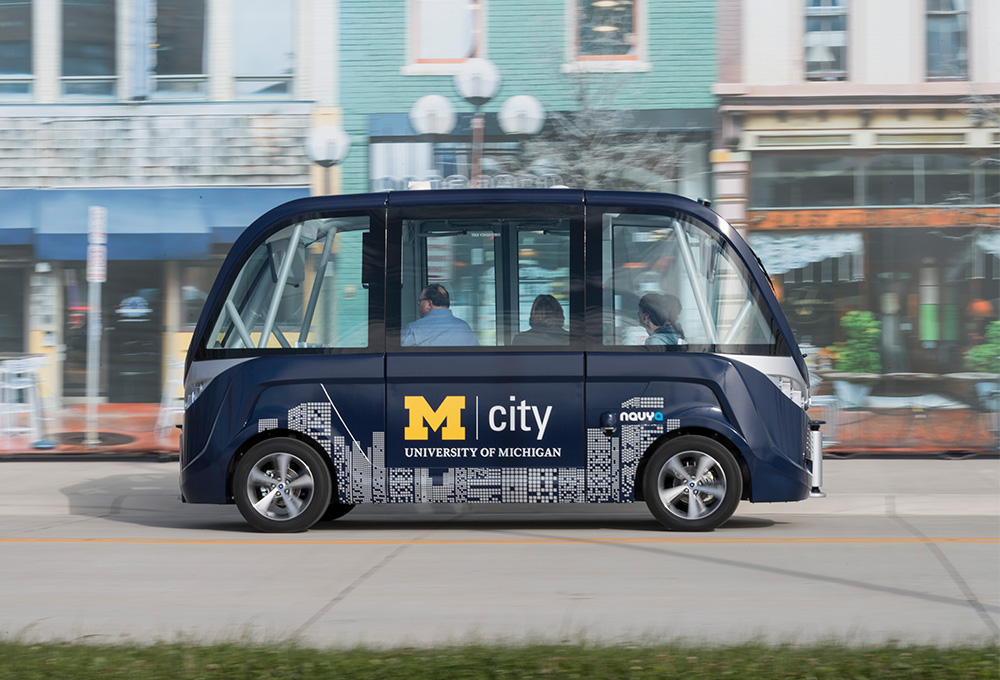“People tend to overestimate the amount of change that can happen in the near-term, and understate it in the long-term.” Huei Peng, Director of Mcity
Last week we made a trip to Ann Arbor, Michigan to hear more about Mcity. Mcity is a public-private partnership that focuses on the research, development, and deployment of connected and automated vehicles. It runs the Mcity Test Facility, a 32-acre proving ground for advanced mobility vehicles and technologies, which opened in 2015 at the University of Michigan. The Mcity Test Facility has eight connected intersections, a traffic control center, cameras, radars, and a small fleet of its own fully-automated driverless vehicles. The public-private partnership is comprised of more than 65 industry members including: BMW, Ford, GM, Honda, Toyota, Intel, Qualcomm, and State Farm. It also leverages many government funded projects, from the U.S. Department of Transportation, and the U.S. Department of Energy.

Mock city approach. While there are other paved test facilities used for connected and autonomous vehicle testing, Mcity is the first purpose-built mock city in the United States designed specifically for autonomous driving research. We see this mock city approach as an important avenue to advance autonomy. It’s important to note that WayMo and Uber’s projects in Phoenix and Pittsburgh are testing largely on public roads. Testing in a controlled environment such as the Mcity Test Facility has many benefits: the tests are safer, cheaper, faster, and repeatable.
Importance of DSRC. One focus at Mcity is dedicated short-range communications, or DSRC. DSRC is designed specifically for automotive safety applications, and enables vehicle-to-vehicle or vehicle-to-infrastructure communications with an effective range of 1000 feet. DSRC, like other wireless communications, does not need line-of-sight visibility to detect potential safety threats, such as an unseen vehicle ahead stopping suddenly in a snowstorm. DSRC can essentially serve as another sensor, providing useful vehicle and traffic information to support autonomous driving. We’re surprised to hear that many traditional auto manufactures believe DSRC makes cars safer, but WayMo and Tesla are not taking advantage of its benefits.
When will we have self-driving cars? Heading into our visit, we wanted to get a read for when consumers will be able to purchase a fully autonomous vehicle in the United States. Peng cautioned that while autonomous vehicles are ready for some niche and limited applications, anytime, anywhere driverless vehicles may take longer than we think, commenting that “developing a car that is 90% safe is relatively easy, 99% safe is harder, and the remaining 1% will take a very long time.” While Peng stopped short of predicting a roll out year, our sense is that 2025 will be the year when some autonomous vehicles are on par with, or better than, average human drivers in most driving conditions. It is clear that a lot needs to happen between now and the time we reach full autonomy. Peng illustrated this in an analogy that today self-driving cars are in the relatively early stages of development, much like planes before the airline industry invested a tremendous amount of time testing new technologies as it moved to fully automated planes like the fly-by-wire Boeing 777. Getting to that level of readiness is necessary for autonomous driving to reach mainstream use, and will require much more evaluation and testing.

We took our findings from Mcity and applied it timing of Tesla autonomy, AI and auto, and quality of miles driven data. It’s important to note that the insights below are attributed to Loup Ventures.
We’re believers in Tesla, despite the fact we think they’ll miss their autonomy launch target. We expect Tesla to miss their 2019 autonomy launch target, and see 2022 as more realistic roll out year. Elon Musk has been clear that he expects each Tesla made today to be autonomous in 2019. What’s not clear about the 2019 target is what level of autonomy will be reached. At the recent Model 3 hand-off event, Musk made a reference to sleeping in your vehicle as an acceptable activity in autonomy, suggesting their 2019 goal is to reach the Level 4 or Level 5. Getting to Level 5 is a light year leap from Level 4. Level 4 autonomy is where no driver is needed, but the vehicle’s speed, range, and weather conditions (snow is a material problem) are limited. Level 2 autonomy is available today in some production cars as advanced driver assistance. It’s important to note, Tesla’s approach is evolutionary, moving Autopilot to Advanced Autopilot, and finally to self-driving. This is different than WayMo’s revolutionary approach of entering the market with a Level 4 or 5 autonomous vehicle.
AI’s fit. When we think about AI being better than humans, we think of cases where machines have defeated humans, like in chess or video games. These examples are in a world with a finite number of choices. On the other hand, driving in the real world has an infinite number of choices. WayMo, Uber, and Tesla are at an advantage when it comes to tackling these infinite choices, given that they’ve already logged significant miles to feed their respective self-driving neural networks. We believe the miles driven gap will be hard for new self-driving players to close. Because the problem is so complex, the neural network will need to learn from hundreds of billions of miles (today we are sub 2 billion miles). Also, consider that a car can only drive on roads that its trained on, so a U.S. autonomous car can’t drive in China.
Quality of data. While it’s true AI with more miles is better than fewer miles, it’s important to understand the distinctions between data captured by each player. We believe Waymo’s 3 million miles have saved most if not all of the critical data, and we have questions regarding how much data is stored and shared back from Tesla’s owners. Most Tesla data is discarded, since a Wi-Fi connection once a week doesn’t have enough bandwidth to share all of the data.
We left our visit to Mcity with a better sense of how traditional auto and tech companies are approaching autonomy. In addition, we reached a few new insights about the timing question, including the fact that the timing question is less relevant. We think back to Peng’s flight analogy, and believe we’re underestimating the significance of change autonomous vehicles will bring to the world.
Disclaimer: We actively write about the themes in which we invest: artificial intelligence, robotics, virtual reality, and augmented reality. From time to time, we will write about companies that are in our portfolio. Content on this site including opinions on specific themes in technology, market estimates, and estimates and commentary regarding publicly traded or private companies is not intended for use in making investment decisions. We hold no obligation to update any of our projections. We express no warranties about any estimates or opinions we make.